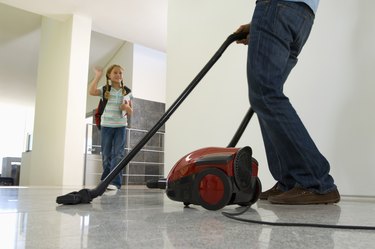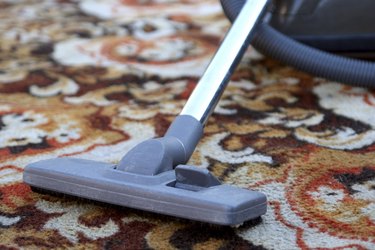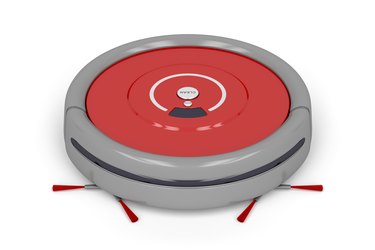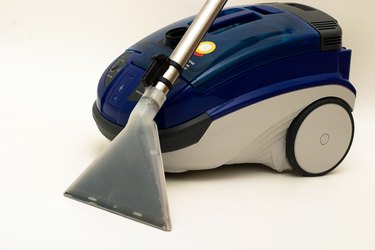
The first vacuums were bulky, cumbersome machines that often required two people to operate them. Modern vacuums have come a long way with on-board features like telescoping attachments and HEPA filters that remove allergens from the air. When choosing a vacuum, consider your budget and the flooring in your house as well as the amount of traffic and wear your floors receive. Buy well-made vacuums with metal or durable plastic parts.
Canister Vacuums
Video of the Day

Canister vacuums often provide better suction than upright models and generally last longer. The long metal hoses found on canister vacuums work well for cleaning upholstery, stairs and draperies and even reach under sofas and beds. Some canister models offer a hard surface setting that turns the beater bar off, which is an important feature if you want to clean hardwood or tile floors because the beater bar may dent or damage these surfaces. One drawback to canister vacuums is that they may seem more cumbersome to use than uprights. The vacuum bags are small, requiring frequent replacement.
Video of the Day
Upright Vacuums

Upright vacuums range from lightweight models priced under $100 to heavy-duty machines that cost well over $1,000. Upright vacuums are easy to use and clean carpets well. They may have a hose with attachments for cleaning stairs and upholstery. Some models have a bagless, cyclone vacuum system that eliminates the need for vacuum bags, although the collection cup must be emptied. Uprights vary in their cleaning ability and may lose suction over time. Additionally, they may not have a setting for hard surfaces. The attachment hoses are often flimsy and short.
Robotic Vacuums

Robotic vacuums work well for quick clean-ups. Just set them on the floor, push a button and the vacuum does the work for you. Models under $1,000 (as of January 2011) generally have a rotating brush that pushes dirt into a cup inside the machine, rather than removing dirt through suction. If you use a robotic vacuum, you'll probably want to alternate with a canister or upright machine at least every other time to get the carpet thoroughly clean.
Wet/Dry Vacuums

Wet/dry vacuums, sometimes known as shop vacs, handle bulky materials or wet spills that would ruin an ordinary vacuum. These machines have a large canister with no bag. The nozzle attachment simply vacuums up anything in its path, including sawdust, drywall scraps and litter from your car. Since these vacuums don't have a bag or seal, they tend to be dusty, and their size makes them impractical for indoor use. Keep one in the garage or shop for cleaning up big spills.